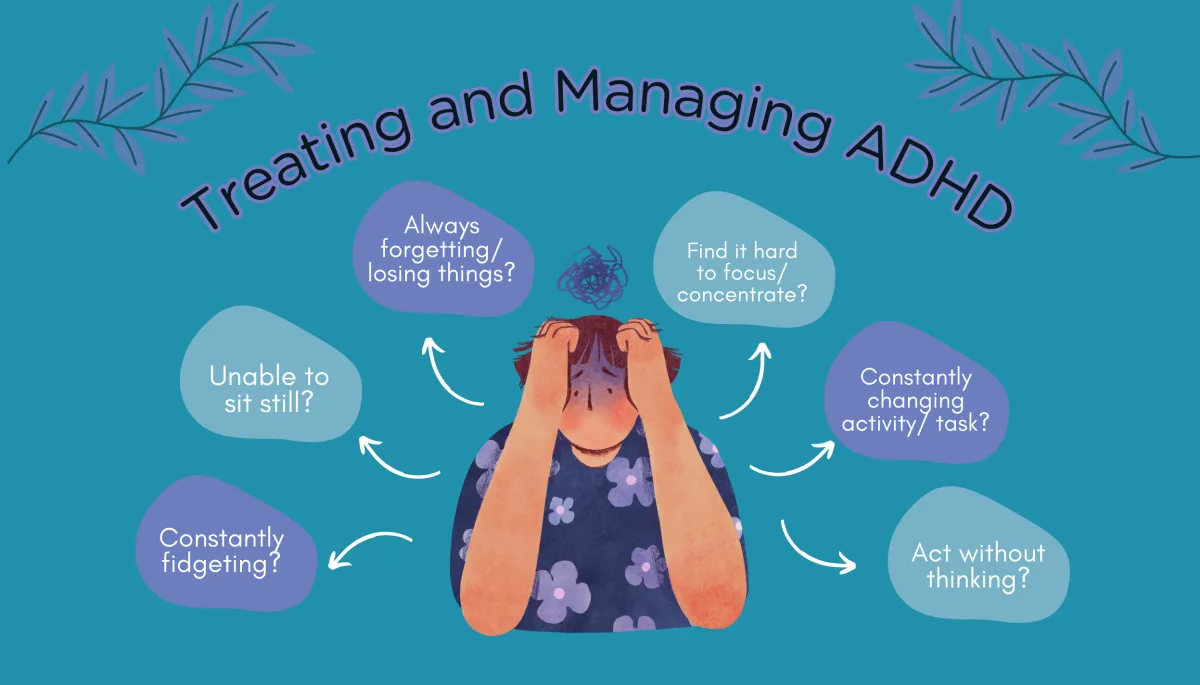General Inquiries: (587) 333-6349 - info@sanostate.com



Treating and Managing ADHD
“The gold standard in the ADHD literature typically consists of a combined approach to treatment.”
Attention-Deficit / Hyperactivity-Disorder (ADHD) is a very common neurodevelopmental disorder that first appears in childhood but sometimes people aren’t diagnosed until adulthood.
According to the Diagnostic and Statistical Manual of Mental Disorders (DSM-5), there are three different presentations, including 1) Inattentive, 2) Hyperactive-Impulsive, and 3) Combined. For an individual, these symptoms can change over time. For example, in childhood, the hyperactive-impulsive presentation may change more to combined or inattentive in adulthood.
Symptoms vary a bit according to presentation and can include (but are not limited to):
Difficulty with focus and / or disproportionate daydreaming,
Forgetfulness,
Making mistakes,
Fidgeting,
Difficulty delaying gratification or resisting temptation, and
Difficulty socially and / or emotionally
A big part of ADHD is trouble with executive functioning. Executive functioning is a set of skills to do with planning ahead, organization, task initiation and follow-through, self-control and focus, time management, and adaptive thinking. It also can have an impact on emotional regulation.
Those with ADHD are more likely to experience other mental health difficulties such as anxiety, depression, substance abuse, and sleep problems. It also impacts self-concept, self-esteem, and relationships. It can be very impactful to not only the person with ADHD themselves, as well as others around them. Thus, managing symptoms becomes very important and empowering.
Three Main Ways to Manage ADHD Symptoms
Behavioural Strategies
This includes gaining knowledge about ADHD and how one’s brain operates as well as making use of strategies such as lists, timers, and reinforcement schedules to help achieve tasks and goals. This can be done individually or in conjunction with a professional such as a therapist who specializes in ADHD treatment. Behavioural strategies can also include things like ensuring optimal levels of rest, nutrition, and physical activity levels as well as reducing things that can lead to over-stimulation or dependence on stimulation, such as screen time or other sensory challenges in one’s environment.
Neurofeedback Therapy / Brain Training
Neurofeedback therapy is a form of brain training which focuses on measuring brainwaves and then providing (audio or visual) feedback to help the brain make changes to its own brainwaves. Over time, the brain learns these new patterns and reduces the amount of excessive slow or fast wave which typically corresponds to positive changes and symptom reduction. It is important to work closely with a trained specialist to ensure best outcomes.
Medication
ADHD medications are commonly prescribed to treat symptoms and can include stimulants or non-stimulant medication. This has to be done in conjunction with a prescribing practitioner (such as medical doctor, or possibly a nurse practitioner or pharmacist) and preferably one who you see on a regular basis so that they can follow your progress and/or side effects and make appropriate adjustments to dosing or medication itself. It can take some trial and error to determine the best fit so working with someone consistently can help with this process and ensure that you don’t have to spend extra time waiting at clinics to renew prescriptions and discuss treatment success.
What Treatment Should I Focus on?
The gold standard in the ADHD literature typically consists of a combined approach to treatment. For example, two or more of the above together.
I suggest starting by talking to someone you trust and developing a plan from there.
Most people already have a relationship with a doctor or someone in their life that is knowledgeable and that they trust to have these conversations with. Some therapists will also offer free 15-minute consultations to discuss how they can help.
Through this process, you can come up with a plan and determine if you’d like to try one or more of the above techniques for ADHD management. It might depend on how impactful the symptoms are to your current functioning and how quickly you need or want changes. For example, medication will typically work faster than behavioural strategies or Neurofeedback therapy, but the positive effects will only last for the time you are actively taking the medication and may come with side effects.
Bottom line: discussing your options with a trusted source who can go over the pros and cons of each with you and help you make an informed decision is the best way forward.
References
ADHD and mental health. Mind. (n.d.). Retrieved April 5, 2023, from https://www.mind.org.uk/information-support/tips-for-everyday-living/adhd-and-mental-health/
Barkley, R. A. (2013). Taking charge of ADHD: The complete, authoritative guide for parents (3rd ed.). The Guilford Press.
Faraone, S. V., Banaschewski, T., Coghill, D., Zheng, Y., Biederman, J., Bellgrove, M. A., . . . Wang, Y. (2021). The World Federation of ADHD International Consensus Statement: 208 evidence-based conclusions about the disorder. Neuroscience & Biobehavioral Reviews. doi:10.1016/j.neubiorev.2021.01.022
What is executive function? how executive functioning skills affect early development. Center on the Developing Child at Harvard University. (2020, October 30). Retrieved April 5, 2023, from https://developingchild.harvard.edu/resources/what-is-executive-function-and-how-does-it-relate-to-child-development/
General Inquiries:
Our Locations:
Additional Resources:
About Us:
We strive for excellence in psychological treatment. We are committed to providing professional, caring, innovative, and research-based services.
© 2024 Sano State Taylored Psychology. All Rights Reserved.

